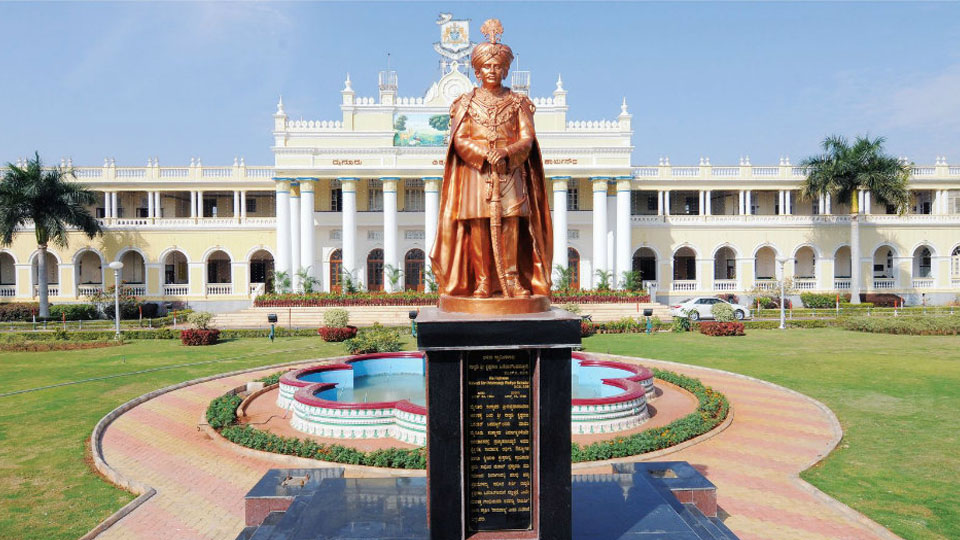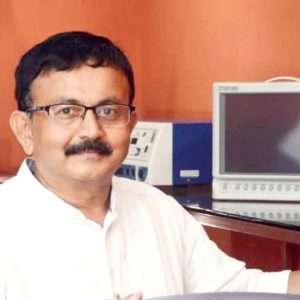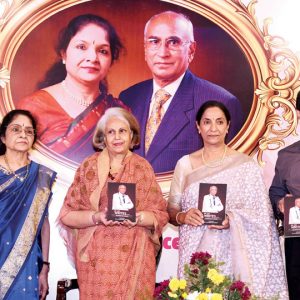Higher education and new education policy is being discussed across the country. One concern often talked about is the absence of World Class Universities from India in the top 100 of the Global Ranking. Prof. J.A.K. Tareen, former Vice-Chancellor of Kashmir University and presently residing in Mysuru, had made a study on this subject when he was involved in writing the XII Plan Document. Here we publish some of his observations. — Ed
By Prof. J.A.K. Tareen
The absence of any of the Indian Universities and Institutions in the top 100 or even 200 of World Class Universities ranked by international agencies like the Quacquarelli Symonds (QS) Times Higher Education (THE) has been a matter great concern and prestige to the country, the students and parents. Every time the matter was discussed, the men who matter in the corridors of power only spoke of increase in the funding in education, though this is one of the essential inputs, but not all that was required. This has been proved during the XI Five Year Plan. A three-time higher allocation of Rs. 44,000 crore for higher education, ended with only Rs. 18,000 crore utilised, with hardly any tangible growth in programmes, student strength and research output. In fact, 50 percent of the sanctioned posts remained vacant at the end of the plan period.
I had an opportunity to study the basic lacunae (missing parameters) in Indian Institutions vis-a-vis the top 100 of World Class Universities while I was involved in writing the XII Plan Document in 2012. We discovered a few critical characteristics of World Class Universities that were missing or deficient in the Indian Universities. These were:
Critical Mass of Students on the Campus: This factor is extremely crucial for spikes of excellence to rise on a large canvas. The simplest analogy is that fishing in a pond fetches you small fishes and crabs,while fishing in oceans gets a catch of all sizes but sometimes, a shark or a whale, that you don’t find in a pond. What we are missing in our campuses is a shark or whale. The available space in every University campus of the country and a College (with a few exceptions in the urban areas and major cities) are grossly underutilised.
The national average of students on campus of Indian Universities is 3,500 and of a College is 460. The average student strength on the campuses of World Class Universities is about 20,000 and it even goes up to 80 or 90,000. Huge Indian campuses have an average student density of 11 per acre while it is up to 60 to 70 per acre in most World Class Universities.
The bottom line is that every Institution and University should use its campuses optimally which means, they should focus on doubling and tripling the student intake with proportional increase in amenities, infrastructure and faculty. This would consume bulk of the increased fund allocation. This policy was missing in XI Plan that resulted in less than 50 percent utilisation of funds. The significance of critical mass does not find prominent place even in our Draft Education Policy.

Diversity Index: Besides critical mass, the Diversity Index of faculty and students on the campus contributes to the quality of teaching, learning, innovation and inventions which is the major concern of most Indian Institutions except for the Centrally-funded premium Institutions. This should come as a National Policy and should be incentivised. The Diversity Index of World Class Universities is more than 50 percent of both students and faculty while it is 0 to 5 percent in all State Government-funded Universities.
The Centrally-funded premium institutions have a diversity of both students and faculty ranging between 20 and 50 percent. This is directly reflected in the better quality and performance of these Institutions. Diversity in student population can only be increased by opening up the admission to students across the country and by conducting their entrance tests across the country at least in major cities.
Student Demography: A hundred-year-old Mysore University does not conduct entrance exams across the country thus limiting its student demography to local districts. The diversity factor of faculty is zero, here. The Karnataka State has been opening the so-called Universities in every district losing sight of the needed universality of a University.
Under-Graduate (UG) programmes on the campus and Integrated Master’s programmes are only at IITs and IIMs and other new Central Technical Institutions and a few Central Universities like Pondicherry University and JNU. The Indian Universities, particularly the State-funded ones have not been proactive on this front for the simple reason that they are too much bound in the intricate knots of Governmental control, freedom to amend statutes and lack of National Policy direction to make Under-Graduate education on University campus mandatory.
Intellectual Walls: The fourth factor that distinguishes Indian Institutions from World Class Universities is too deeply entrenched in our system, culture and mindset. That is, the hard, impermeable intellectual walls between Departments, Faculties and Schools within a University and Forts built between Universities, the Central Research Laboratories and a host of Institutions. This culture was nurtured even in premier Institutions of the country for decades which shuts the sharing of resources and implementation of joint teaching and research programmes. As a result, Indian Universities, Central Research Laboratories and the Centrally-funded premier Institutions have worked as islands, disconnected from each other. This has seriously hindered the cross-breeding of ideas, innovation and inventions in the Indian Institutions as compared to the World Class top 200 Universities, who advocate and practice exactly the opposite of what we do in our Institutions.
Can the National Education Policy strongly advocate the demolition of Walls and Forts? Can it make sharing ideas and resources the new National Mantra than isolation and secretive research in islands?
Unless the above four basic pillars of erecting a World Class University are a part of our National Policy, of course with increased funding of a minimum of 6 percent of the GDP, our dreams of creating World Class Universities figuring in top 50, is hard to achieve.
Coupled with the above, a sea-change in administration needs to be brought in. There is a trust deficit between the administration and academia besides the bureaucratic curbs on free thinking and new ideas. Egos and dominance of senior faculty often kills the enthusiasm of younger faculty. Decentralisation of powers, total non-interference from Government in academic matters and appointment of faculty members, freedom to amend statutes, appropriate laws to appoint faculty from other countries and from across the country, minimum diversity index made mandatory for students and teaching faculty, demolition of artificial boundaries, are the small but supporting steps in creating World Class Universities.
[Padma Shri Prof. Jalees Ahmed Khan Tareen is former Vice-Chancellor of Kashmir University, Pondicherry Central University, B.S. Abdur Rahman Crescent University, Chennai and former member of UGC. email: [email protected]]








As some one who worked in Indian universities and having seen politics and corruption taking over, and pushing meritocracy out, left to work in universities in the West-all of them in the top 25 of the world ranking, I humbly submit that the professor is looking at the wrong end of the telescope and lists items which come way down the pecking order of meritocracy.
All academic appointments in Indian universities are based on factors other than the merit and achievements of the candidates concerned; the same applies for student recruitment. Way back in 1960s,even in IITs, in my experience, this was the case:Professors were appointed based on who recommended them; a significant percentage of students came in through the backdoor based on factors other than their academic excellence. The reason why IITs were able to herald their fitness for educational excellence, because, unlike other universities, there was some recognition of merit amidst the above machinations.
In India, you cannot escape the mighty influence of political interference, quotas and reservations of all kinds,, which leaves a tiny percentage left to open competition that frustrates a really meritorious bunch of aspiring academics to make the difference. I am afraid, this situation will not change. Tiny Singapore has world class NUS and NUT which are ranked under 15. It has world class hospitals too where more and more Indians go for their medical treatment,where the quality of care is assured. It is worthwhile to study the emergence of excellence of the above institutions. But, will there be a willingness to emulate them, setting aside quotas, reservations and political influence? I do not think so.
This professor is deluded in thinking that his list of items would fix the decades-long malaise.
Yes, the author for reasons best known to him only has focused his attention on wrong areas. Let us face this fact: Indian universities are not world class, because the people who manage them , particularly the VCs are not world class. The selection committees which appoint them are rigged to favour particular candidates, who come from the right caste or belongs to the right religion and the favoured candidates almost invariably have cultivated decades of connections with politicians in power. With these people in power, it is no wonder that Indian universities do not reach the standards that dictate them in the top 100/200 of world ranking. It is they along with their mates in the senate and syndicate bodies who dumb down the standards to the gutter level. They are to be blamed and shamed.
Like the poster above, I do not see any Indian university hitting a place within 100/200 in the world ranking in the foreseeable future. It is a depressing thought, but it is the truth. India is a land of institutional nepotism and corruption. The university sector is a political-game playing quagmire. Whenever I bump into one of these VCs , by accident in their journeys in the West, I wonder about their selection process and their suitability to manage any university.
I should add the below:
The ranking concept has originated from the US,and the criteria of critical mass this author cites holds well for US universities where universities are large, and have large multi-faculties. All universities there and in many others in English-speaking countries charge hefty tuition fees, and ranking in a way justifies the tuition fee charged. Even in US, there are smaller institutions which have specialist degree courses, and which have university status. They attract the best students who like to study specific subjects like engineering, and prefer to be in the smaller tuition groups which provide excellent learning opportunities One example of such institution is Rose-Hulman Institute of Technology. This institution has the enviable record of maintaining excellence in their engineering degree courses with reputation exceeding even those offered at the MIT. This institution though has the top US ranking, often does not score well in world ranking as compared to say Purdue University in the neighborhood in the critical mass index factor. But, its degree-holders with their excellent training in their university years, are preferred to other large top universities in the US.
Ranking devised by organisations look at criteria some of which are not relevant. For example, the Diversity Index, aside from gender diversity, may not be meaningful for universities in Germany,like for example,the Technical University of Munich which is ranked under 100, as the students enrolled there at least at the undergraduate level should know German well,and that rules out many non-white non-German students. Courses are taught in German, and that excludes most non-German academic staff with no fluency in German.
Having said the above, times have changed. Now, we are in the midst of the new wave of technological revolution. One need not be a full-time university student. One could get practical expertise in technology whilst studying for a part-time degree In Germany where the industry-based apprenticeship is ranked at par with university degrees, has this route available to students. The government there ensures the quality of apprenticeship,and the availability of them in their world class industries. Thanks to the IT revolution, learning from a distance is here and has been a mature route to a university degree. The IT-focused India, for example, should be interested in such practical apprenticeship training in their IT industries making them prestigious with the above route to university degree courses, through industry-university cooperation framework. The latter could be with top universities in the world.